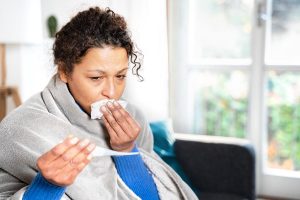When parents abuse prescription painkillers, their teenagers may follow their example, a new study finds.
The study of thousands of U.S. teenagers found that kids were 30 percent more likely to abuse prescription opioids if one of their parents had.
The results mirror what’s been seen in past studies of substance use, including cigarette smoking: When parents do it, their kids are more likely to do it.
But this is the first study to look at those patterns when it comes to prescription opioid abuse, said senior researcher Denise Kandel, a professor at Columbia University Mailman School of Public Health in New York City.
In the current opioid crisis, much of the spotlight is now on illegal drugs like heroin and illicitly manufactured fentanyl. But the roots of the epidemic go back to the 1990s, when prescriptions for opioid painkillers — like Vicodin and OxyContin — soared.
Nationwide, sales of those medications rose 300 percent between 1999 and 2008, according to the U.S. Centers for Disease Control and Prevention.
There was an unintended side effect, however: a sharp rise in painkiller abuse and “diversion” — meaning the drugs increasingly got into the hands of people with no legitimate medical need.
The number of U.S. teenagers abusing prescription opioids has, fortunately, dropped in the past 15 years, according to the U.S. National Institute on Drug Abuse. Still, in 2018, more than 3 percent of high school seniors said they’d abused the drugs in the past year.
The new findings, published online Feb. 25 in the journal Pediatrics, are based on 35,000 parent-teenager pairs. All took part in a government survey between 2004 and 2012.
Overall, Kandel’s team found, about 14 percent of parents said they’d ever abused a prescription opioid. Their kids, in turn, were more likely to do so: 14 percent of those teens admitted to abusing a prescription opioid, versus 8 percent of teenagers whose parents had never misused the drugs.
There were plenty of other factors that swayed teenagers’ odds of abusing prescription painkillers. The risk was higher, for example, among kids who smoked or used marijuana, were depressed, or reported “delinquency” — such as getting into fights at school or carrying a handgun.
But even with other influences factored in, parents’ opioid abuse was tied to a 30 percent increase in their kids’ risk of doing the same.
There was no information on drug sources, Kandel said — so it’s not clear how often teens got their hands on the pills at home.
But easy access to drugs could certainly be one reason that kids were more likely to abuse opioids if their parents did, said Dr. Steven Matson.
And then there’s the simple fact that “kids pattern themselves after their parents,” said Matson, who is medical director of the substance abuse program at Nationwide Children’s Hospital in Columbus, Ohio. He was not involved with the study.
To Matson, the new findings were not surprising, but they do underscore an important point: “Parents have a lot to do with their kids’ risk of substance abuse,” he said. “We definitely know that the environment kids grow up in is a big influence.”
When parents use drugs, smoke or drink heavily, he said, kids may learn to see those habits as less risky than they actually are — or as legitimate ways to deal with life’s problems.
There is also a genetic component, Matson pointed out. If substance abuse cuts across generations of a family, there may be an underlying genetic susceptibility to drug dependence.
When teenagers are treated for opioid abuse, that can offer a chance to catch those issues in other family members, according to Matson. “Any program worth its salt should do a deep dive into the family environment,” he said.
Unfortunately, Matson added, it’s often difficult to get parents to seek help for themselves — especially if they have a long history of substance abuse.
Both he and Kandel pointed to a message that may seem “obvious,” but parents need to remember: Your kids are watching, and they pick up your habits, healthy and unhealthy.
Kandel also said it’s important for kids to learn about the risks of substance abuse outside of home, including at school — particularly since some do not get those messages from their parents.
More information
The U.S. National Institute on Drug Abuse has more on prescription opioid abuse.
Source: HealthDay
Copyright © 2025 HealthDay. All rights reserved.












-300x181.jpeg)




